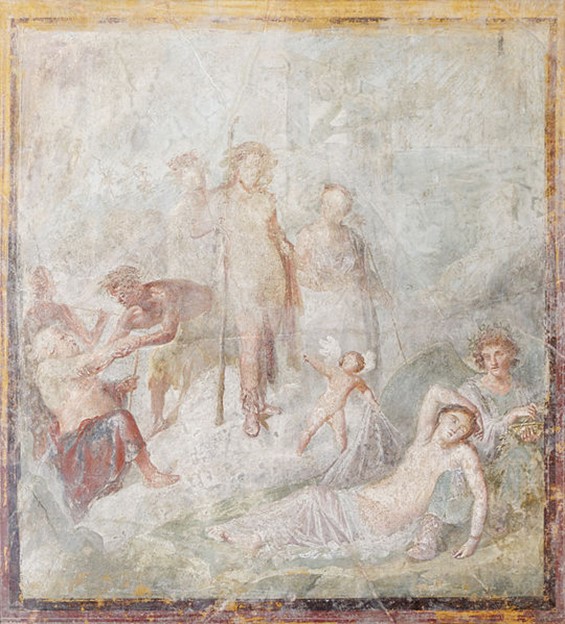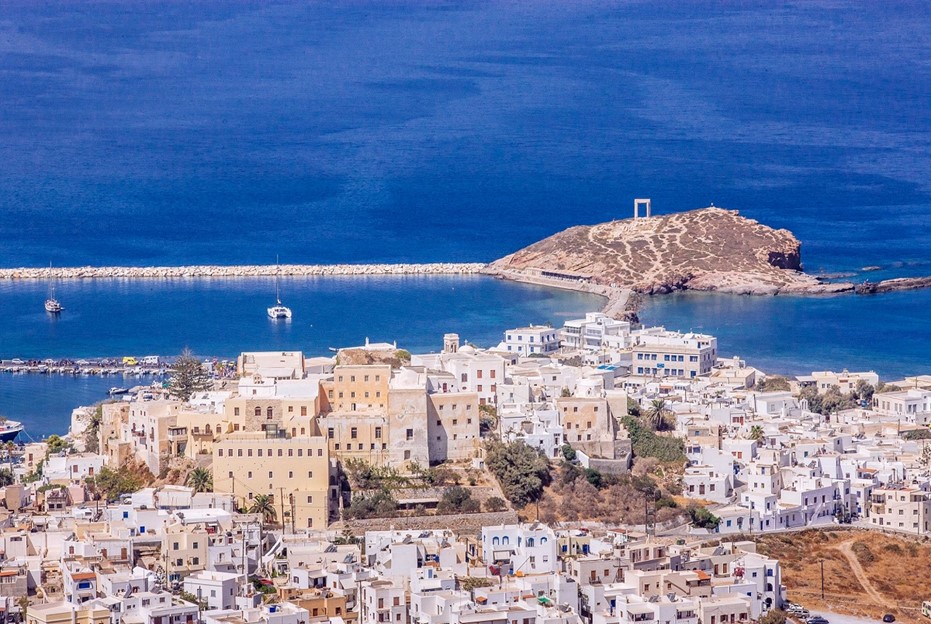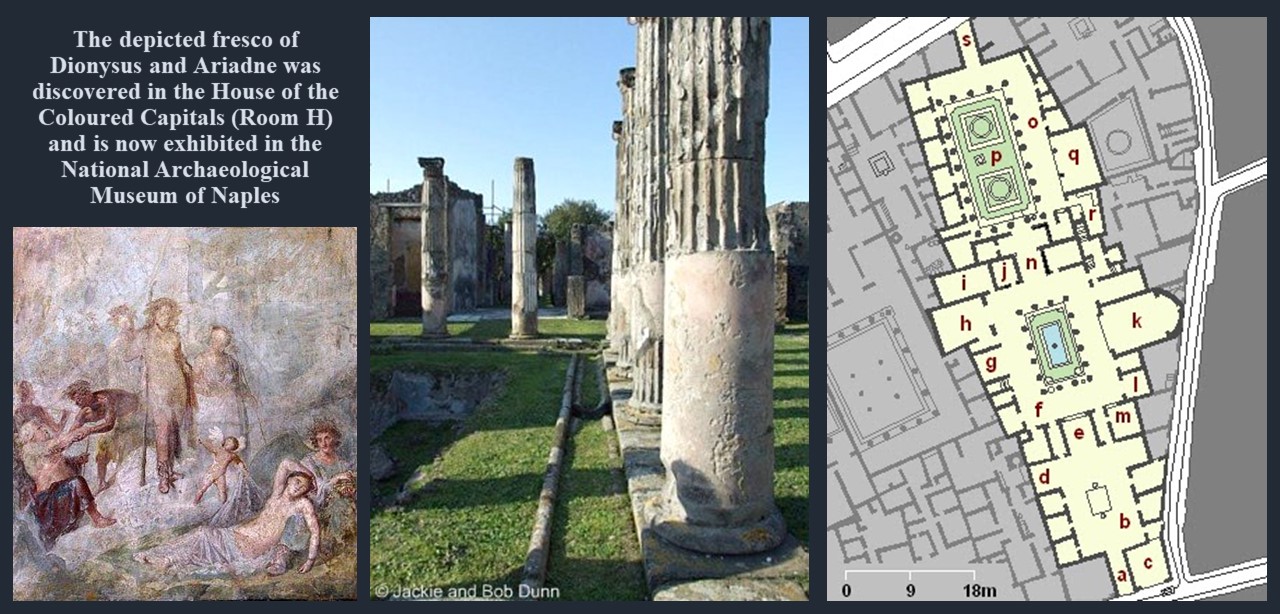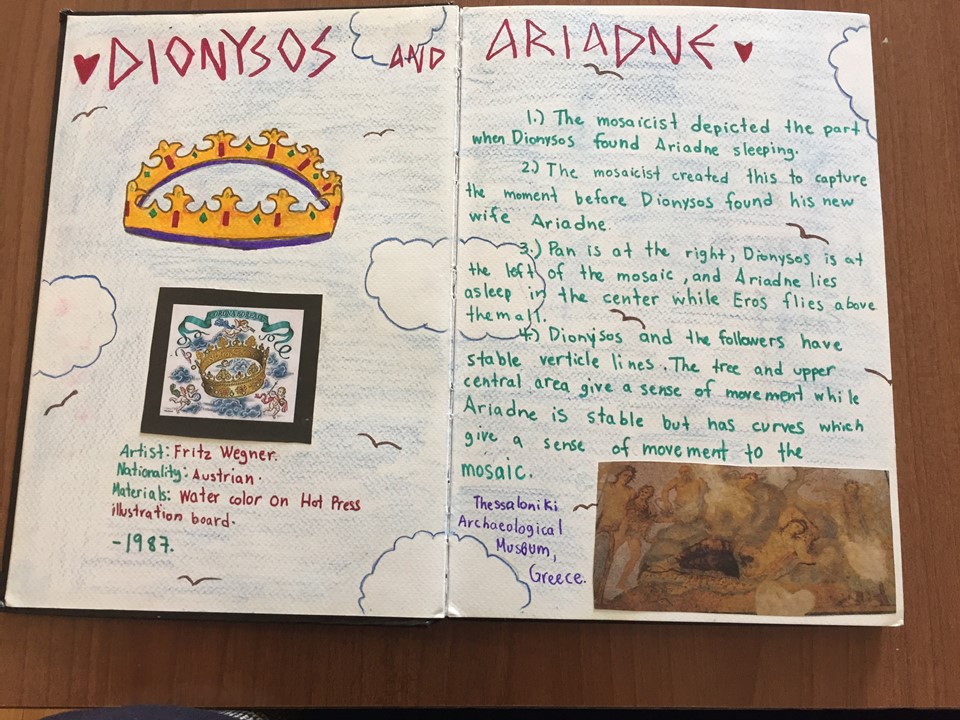
Ariadne on Naxos… what an inspiration… “Eros / The archipelago / And the prow of his seafoam / And the seagulls of his dreams / In his highest mast, the sailor flutters / A song” the Archipelago Song by Odysseas Elytis, 1979, Nobel Prize in Literature. https://www.nobelprize.org/prizes/literature/1979/elytis/biographical/ and https://www.greeklyrics.gr/stixoi/to-tragoudi-tou-arxipelagous/

Naxos is one of the most interesting destinations in Greece! In the center of the Aegean Sea, the biggest and greenest Cycladic island, with a glorious ancient Greek past and the strong influences of the Venetians and the Franks, Naxos is not simply beautiful… it breathes history …and Mythology I would like to add! Naxos was the playground of the Olympian gods, the place where virtuous or naughty, entangled with beautiful women and brave men, gods created a scenery of love and adventure, reality and imagination. The story I like most involves the god Dionysus, the Minoan princess Ariadne and the Islet of Palatia, where today, since the 6th century BC, stands “Portara,” the entrance to the Temple of Apollo, Naxos’s most recognized monument. https://www.greeka.com/cyclades/naxos/
Imagine the scene… Theseus and Ariadne flee Crete in a hurry. With the help of Ariadne, Theseus had just killed the horrible Minotaur in the depths of Knossos’s palace maze. Their first stop to rest on their way to Athens is the island of Naxos… where the story unfolds dramatically and excitingly. God Dionysus, in love with Ariadne, appears to Theseus in his sleep and convinces him to abandon Ariadne at Naxos and continue his trip alone. Ariadne, unaware of divine intervention, disembarks at Naxos, enchanted by the beauty of the island, happily explores it, and tired falls asleep on the beautiful islet of Palatia. When she wakes up… god Dionysus, the son of Zeus and Dione, looks at her adoringly and a new love-affair is in the making. A glorious wedding follows and an eternal gift is still with us to admire… the constellation known as Corona Borealis is said to be Dionysus’s wedding gift to Ariadne, a special ornament to adorn her beautiful head.

In Pompeii, the House of the Coloured Capitals is one of the oldest excavated, back in 1822, again in 1832/33 and 1846. It is one of the largest houses in Pompeii as well, with more than 40 rooms on the ground floor alone, beautifully decorated with frescoes and floor mosaics, combining architecturally, Samnite and Roman features. The name of the house comes from the brightly coloured capitals of the columns of the central peristyle.
You enter the House through a rectangular Atrium (area marked b) with a central Impluvium and proceed to a porticoed Peristyle (area marked f). One of the bigger rooms opening to the peristyle (area marked h), the oecus, is beautifully decorated with frescoes in the 4th Pompeiian Style on a yellow ground. Dilapidated today and neglected since it was initially excavated in 1822, the house’ oecus featured central panels on each wall with a mythological scene. The single panel, faded yet still holding its original charm, character portrays Dionysus and the sleeping Ariadne on the island of Naxos. Dionysus, holding a thyrsus, standing tall in the center of the composition, gazes in wonderment at Ariadne, still sleeping at the knees of god Hypnos. A naughty cupid reveals Ariadne’s covered beauty to Dionysus while an old Silenus, in need of support, and an entourage of satyrs and maenads seem to follow the young god of revelry. https://sites.google.com/site/ad79eruption/pompeii/regio-vii/reg-vii-ins-4/house-of-the-coloured-capitals
The fresco depicting Dionysus discovering the sleeping Ariadne was luckily removed and can now be seen in the National Archaeological Museum in Naples. The scenes left in situ, however, have all but faded away…
For a student RWAP (RWAP stands for Research-Writing-Art-Project), please… check HERE!
Oecus is the Latinized form of Greek Oikos (House), used by Vitruvius for the principal hall or salon in a Roman house, which was used occasionally as a triclinium for banquets. https://en.wikipedia.org/wiki/Oecus
